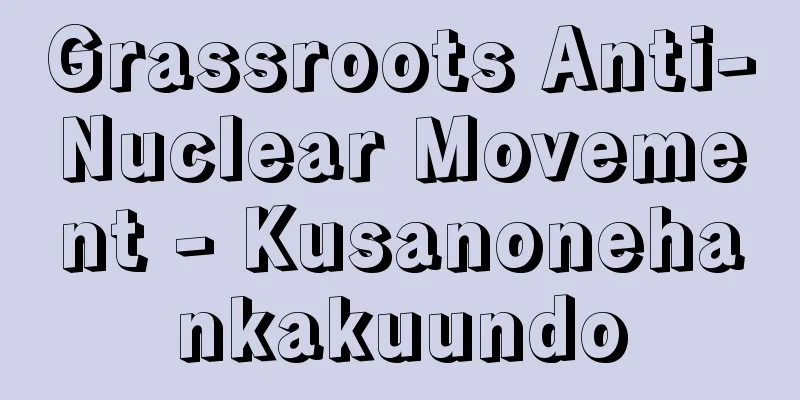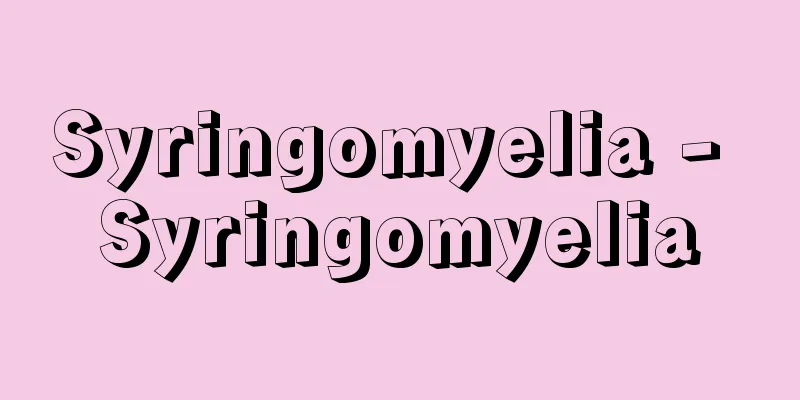Blood Tax Revolt

|
This was an uprising against the conscription law enacted in November 1872 (Meiji 5) and issued the following January. It is also called the Uprising Against the Conscription Law. The name comes from the fact that the "Conscription Notice" describes the obligation to serve in the military as "a term Westerners call 'blood tax', which means giving back to the country with one's own blood." The three-year military service obligation imposed on men who reached the age of 20 included exemptions for government officials, naval and army cadets, students at designated national schools, those who traveled abroad to study, heads of households and heirs, and those who paid a 270 yen fee for their services. However, for ordinary farmers who were not covered by these exemptions, especially the second and third sons, conscription was an unavoidable heavy burden as a labor conscription. The Blood Tax Uprising was an uprising against this burden, and here lies the essence of the Blood Tax Uprising. The theory that this was due to the misconception that conscription would suck out people's "lifeblood" is a popular myth that does not address the true nature of the matter. As far as we know, there were 19 Blood Tax Rebellions, and all but two occurred in 1873. They all shared the following characteristics. First, with the exception of one in the Tohoku region, they were all concentrated in western Japan (especially Chugoku and Shikoku). This is likely related to the relatively low ratio of conscription exemptions in this region. Second, opposition to the conscription law was often combined with opposition to the various new policies that came after the abolition of the feudal domains and the establishment of prefectures, including the school system, the adoption of the solar calendar, and the abolition of the title eta and hinin. In this respect, the Blood Tax Rebellions are at the center of the uprisings against the new government of this period. Third, the uprisings took a variety of forms, but often took the form of violent riots, involving the complete destruction and burning of ward heads' houses and schools. Among these was the uprising that spread throughout Hojo Prefecture (Mimasaka Province, present-day Okayama Prefecture) from May 26 to June 1, 1873, in which over 400 houses were destroyed and burned (26,000 people were executed, including 15 executed), and the uprising that followed in Tottori Prefecture (Hoki Province), Aimi County, which was influenced by the uprising, and which took place from June 19 to 23, 1873. Representative of these were the uprisings in seven Kagawa counties (Toyota, Mino, Tado, Naka, Ano, Utari) in Myodo Prefecture (Sanuki Province, present-day Kagawa Prefecture) in which approximately 600 households were beheaded between the 27th of that month and the 6th of July (approximately 20,000 people were executed, including 7 people sentenced to death). The Blood Tax Rebellion, which had the above characteristics, would eventually develop into the uprisings against the land tax reform that began in 1873, as the reform progressed. [Tetsuo Kondo] "Tsuchiya Takao and Ono Michio (eds.), "Records of Peasant Riots in the Early Meiji Era" (1953, Keiso Shobo)" ▽ "Aoki Koji (ed.), "Comprehensive Chronology of Peasant Uprisings" (1971, Sanichi Shobo)" ▽ "Sasaki Junnosuke (ed.), "History of the Japanese People 5: Reforming the World" (1974, Sanseido)" [References] | |Source: Shogakukan Encyclopedia Nipponica About Encyclopedia Nipponica Information | Legend |
|
1872年(明治5)11月制定、翌年1月発布の徴兵令に対する反対一揆。徴兵令反対一揆ともいう。「徴兵告諭」のなかで徴兵の義務を「西人(せいじん)之(これ)ヲ称シテ血税ト云(い)フ其(その)生血ヲ以(もっ)テ国ニ報スルノ謂(いい)ナリ」としたことから、この名がおこった。20歳に達した男子に課せられる3か年の兵役義務には、官吏、海陸軍生徒、所定の官立学校の生徒、洋行修業者、戸主・嗣子(しし)、代人料270円上納者ほかの免役条項があったが、それらの適用を受けられない一般農民の、とくに二、三男にとっては、徴兵は逃れられない労働力徴発としての意味をもつ過重な負担であった。血税一揆は、この負担に反対する一揆で、ここに血税一揆の本質がある。徴兵によって「生血」を吸い取られると誤解したためであるとする説は、この本質をみない俗説である。 血税一揆は、現在判明する限りで19件を数えるが、2件を除きすべて1873年に集中的に発生した。そこには次のような共通の特徴がみられる。第一に、東北地方での1件を別とすれば、いずれも西日本(とくに中国、四国)に集中していることである。これは、この地域における徴兵免役者の比率の相対的低さと関連があるものと思われる。第二に、徴兵令反対が、多くの場合、学制、太陽暦の採用、穢多非人(えたひにん)の称の廃止をはじめ廃藩置県後の種々の新政策への反対と結合していることである。この点で、血税一揆は、この時期の新政反対一揆の中心に位置する。第三に、一揆は多様な形態をとってはいるが、しばしば区戸長宅、学校などの徹底的な打毀(うちこわし)、焼打ちを伴った激しい暴動の形態をとったことである。なかでも、73年5月26日から6月1日にかけて400戸以上の打毀、焼打ちを展開した北条(ほうじょう)県(美作(みまさか)国、現岡山県)の全県下に及んだ一揆(処刑者は死刑15人を含む約2万6000人)、ついでその影響のもとに6月19日から23日にかけて激烈な打毀を展開した鳥取県(伯耆(ほうき)国)会見(あいみ)郡の一揆(処刑者は終身刑1人を含む約1万2000人)、さらに同月27日から7月6日にかけて約600戸の打毀を展開した名東(みょうどう)県(讃岐(さぬき)国、現香川県)豊田(とよた)、三野(みの)、多度(たど)、那珂(なか)、阿野(あの)、鵜足(うたり)、香川7郡の一揆(処刑者は死刑7人を含む約2万人)が、その代表的なものである。以上の特質をもつ血税一揆は、73年以降の地租改正の進行とともに、やがて地租改正反対一揆の展開へと受け継がれていくことになる。 [近藤哲生] 『土屋喬雄・小野道雄編『明治初年農民騒擾録』(1953・勁草書房)』▽『青木虹二編『百姓一揆総合年表』(1971・三一書房)』▽『佐々木潤之介編『日本民衆の歴史5 世直し』(1974・三省堂)』 [参照項目] | |出典 小学館 日本大百科全書(ニッポニカ)日本大百科全書(ニッポニカ)について 情報 | 凡例 |
Recommend
Housework - Kajiroudo
Domestic work is the subsistence work necessary f...
Vaclav II (English spelling)
…Otakar was defeated and killed in the Battle of ...
Brasov (English spelling)
In German it is called Kronstadt, and in Hungarian...
Phonology
In a broad sense, it refers to the study of phono...
Marseille - Marseille (English spelling)
It is a port city and the capital of the Bouches-...
Anfissa - Anfissa
…It was also a major player in the Second and Thi...
LCU - El C You
...(a) A craft that beaches and lowers a diagonal...
Cassini Secret Agreement
...The treaty consisted of six articles, the main...
Kajitoriya Jiemon - Kajitoriya Jiemon
⇒ Yamase Harumasa Source: Kodansha Digital Japanes...
The biography of Prince Shotoku at Jōgū
A biography of Prince Shotoku. Published in the ea...
Sūrasena (English spelling)
…The term mahājanapada translates to “great count...
Mizuhiki - Mizuhiki
〘Noun〙① The act of soaking hemp etc. in water and ...
Ebisugai (Ebisugai) - Ebisugai (English spelling) Tristichotrochus unicus
A snail shell of the family Muscidae (illustration...
Kirigamine Tateshina Venus Line
...The Tateshina Plateau is a gentle slope at an ...
Street Journal - Street Journal
…During the Qing Dynasty, the Chingbu Office appe...









